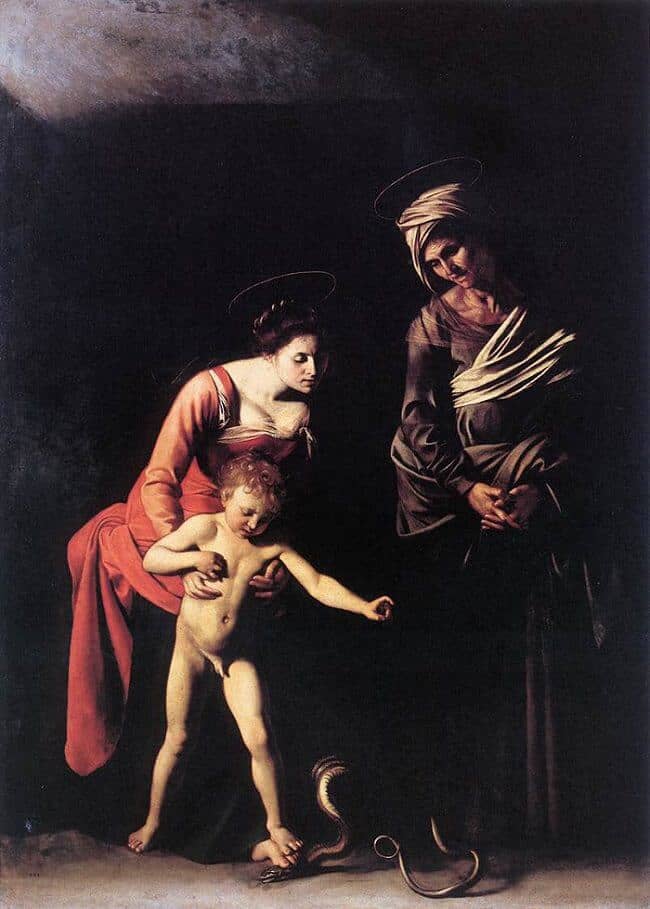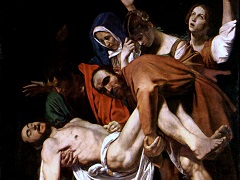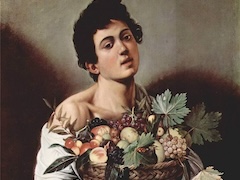The Madonna of the Grooms, 1605 by Caravaggio

The subject, derived from a passage in the Old Testament, was codified by a papal bull on the rosary promulgated by Pius IV in 1569. This bull established the joint responsibility of Christ and the Virgin for crushing the serpent
of original sin. Because the Roman Catholic church identified itself with the Virgin, its stamping-out of heresy is also implied. The shadowy Saint Anne is present as Mary's mother, the vessel of her immaculate conception, the
source of her purity. Like The Madonna of Loreto, the image is a Counter-Reformation document in defense of the Roman Catholic church, directed against Protestant denial of
the Immaculate Conception and of the Virgin as mediator.
The Madonna of the Grooms is the only surviving painting in which Caravaggio undertook so irredeemably doctrinal and artificial a subject. He translated it into human terms, to bring its theological abstraction to life.
Although removed from the historic world, the three figures behave naturally, as if in the intimacy of a prosperous artisan's family. The Virgin solicitously supports Christ, represented as an obedient child frowning as he presses
His foot on hers, thus trampling the serpent. Saint Anne looks on, a concerned but detached grandmother, keeping to the background.
As an altarpiece in a dark chapel it would seem as sculptural as The Entombment. Probably Caravaggio found Roman matrons in ancient sculpture as self-assured as this Virgin and as tall and columnar
as Saint Anne. And in Christ's figure, pose, and action, the infant Hercules may live again. The pictorial source is Ambrogio Figino's altarpiece of the Madonna and Child engaged in the same action, without Saint Anne, which was
in the church of San Fedele in Milan, where Caravaggio must have seen it. In Rome he probably used an engraving of Figino's painting to refresh his memory, as is indicated by his having reversed the poses. He added Saint Anne
because she was the Grooms' patroness and had been represented in their former altarpiece in old Saint Peter's.
















